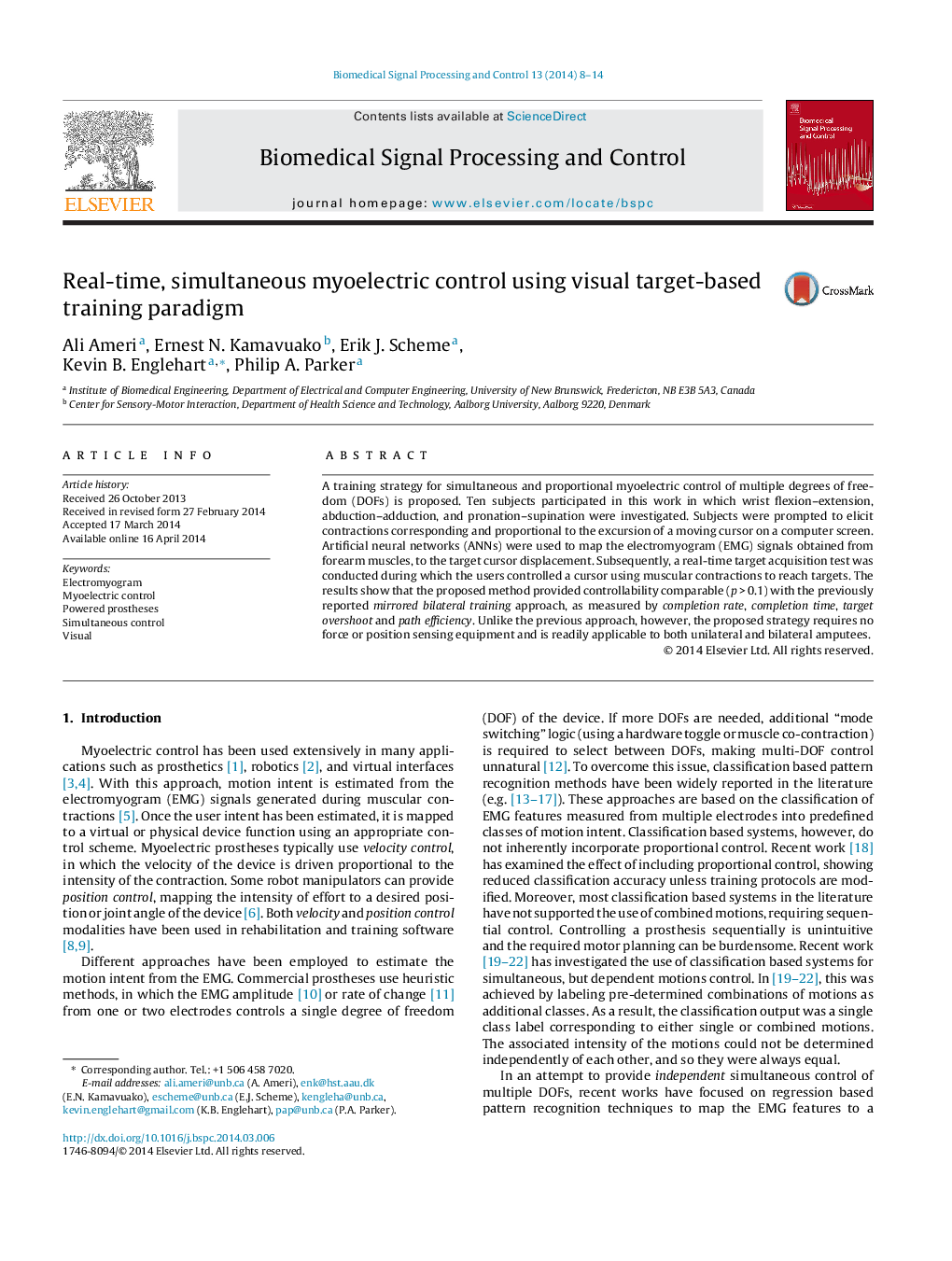| Article ID | Journal | Published Year | Pages | File Type |
|---|---|---|---|---|
| 562567 | Biomedical Signal Processing and Control | 2014 | 7 Pages |
•A new training strategy for simultaneous myoelectric control is proposed.•The system was trained using a visual target.•The control performance was similar to that of the mirrored bilateral training.•The proposed method does not need force or position sensing equipments.•The proposed method is potentially applicable to unilateral and bilateral amputees.
A training strategy for simultaneous and proportional myoelectric control of multiple degrees of freedom (DOFs) is proposed. Ten subjects participated in this work in which wrist flexion–extension, abduction–adduction, and pronation–supination were investigated. Subjects were prompted to elicit contractions corresponding and proportional to the excursion of a moving cursor on a computer screen. Artificial neural networks (ANNs) were used to map the electromyogram (EMG) signals obtained from forearm muscles, to the target cursor displacement. Subsequently, a real-time target acquisition test was conducted during which the users controlled a cursor using muscular contractions to reach targets. The results show that the proposed method provided controllability comparable (p > 0.1) with the previously reported mirrored bilateral training approach, as measured by completion rate, completion time, target overshoot and path efficiency. Unlike the previous approach, however, the proposed strategy requires no force or position sensing equipment and is readily applicable to both unilateral and bilateral amputees.
